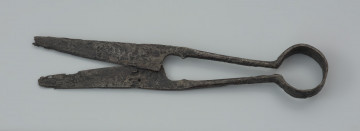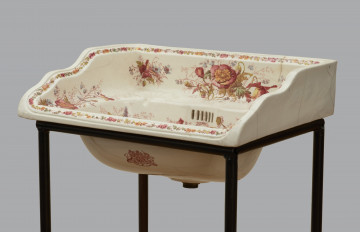
Spring shears
476 — 1250
National Museum in Szczecin
Part of the collection: Household
A fly trap is a device that was once used to combat bothersome insects. In the 19th century and the first half of the 20th century, they were common in households, both in rural areas and in cities. Glass jars, like the one presented, were designed so that insects could easily fly inside but could not escape. This was due to their cylindrical, inwardly curved bottoms, which had an opening. Various mixtures were used as bait: a water solution with sugar, beer, or honey; soapy water; plain water; or small pieces of meat or cheese. All of this, depending on the beliefs of the housewife, was intended to help eliminate the insects. Fly traps in the form of glass containers fell into obscurity around the mid-20th century. They were no longer used as the more effective, though less aesthetically pleasing, flypaper became widespread. Iwona Karwowska
Author / creator
Object type
bottle, trap
Technique
mold casting, batch production
Material
colourless glass
Origin / acquisition method
dar ?
Creation time / dating
Creation / finding place
Owner
The National Museum in Szczecin
Identification number
Location / status

476 — 1250
National Museum in Szczecin

1901 — 1925
National Museum in Szczecin

1890 — 1910
National Museum in Szczecin
DISCOVER this TOPIC
National Museum in Lublin
DISCOVER this PATH
Educational path